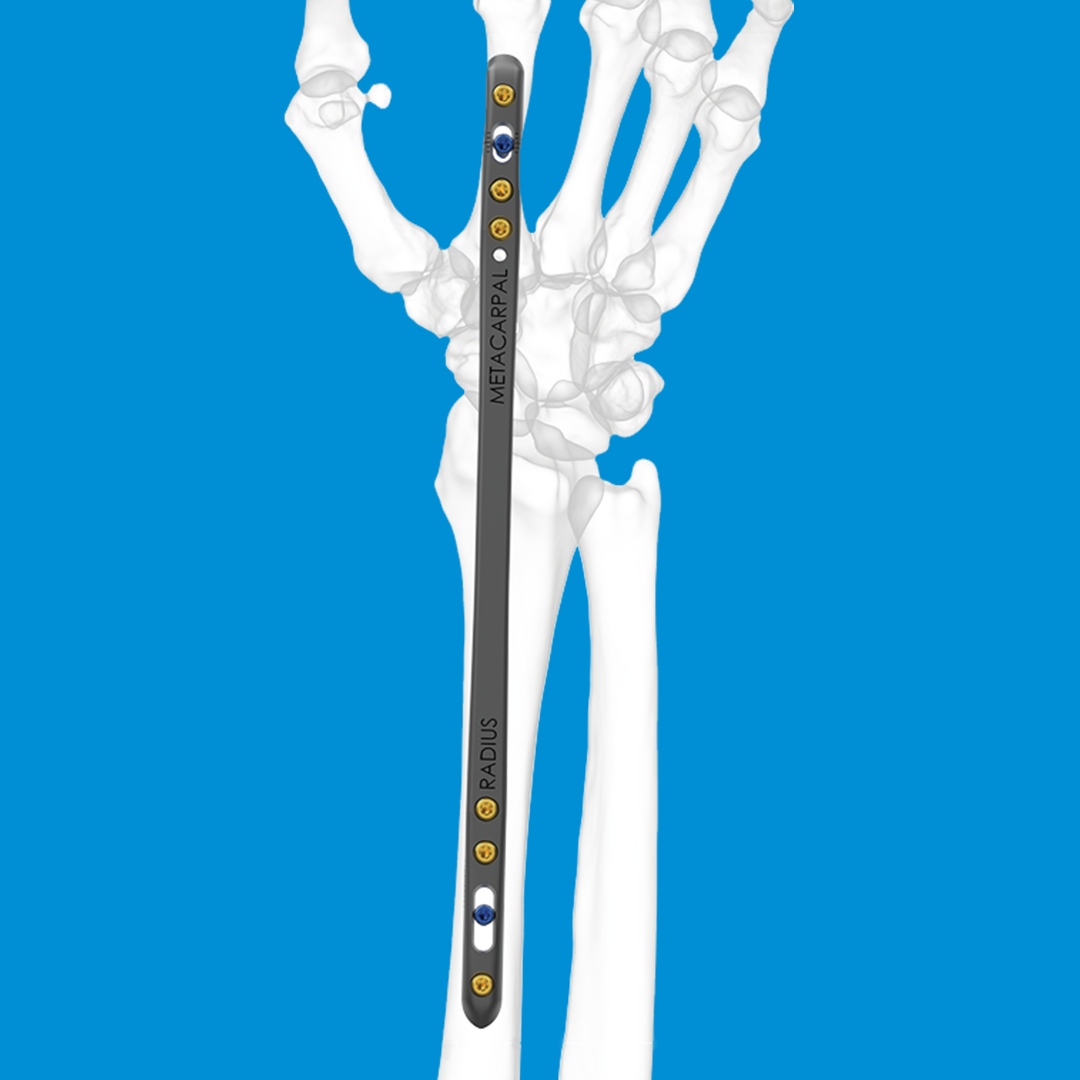
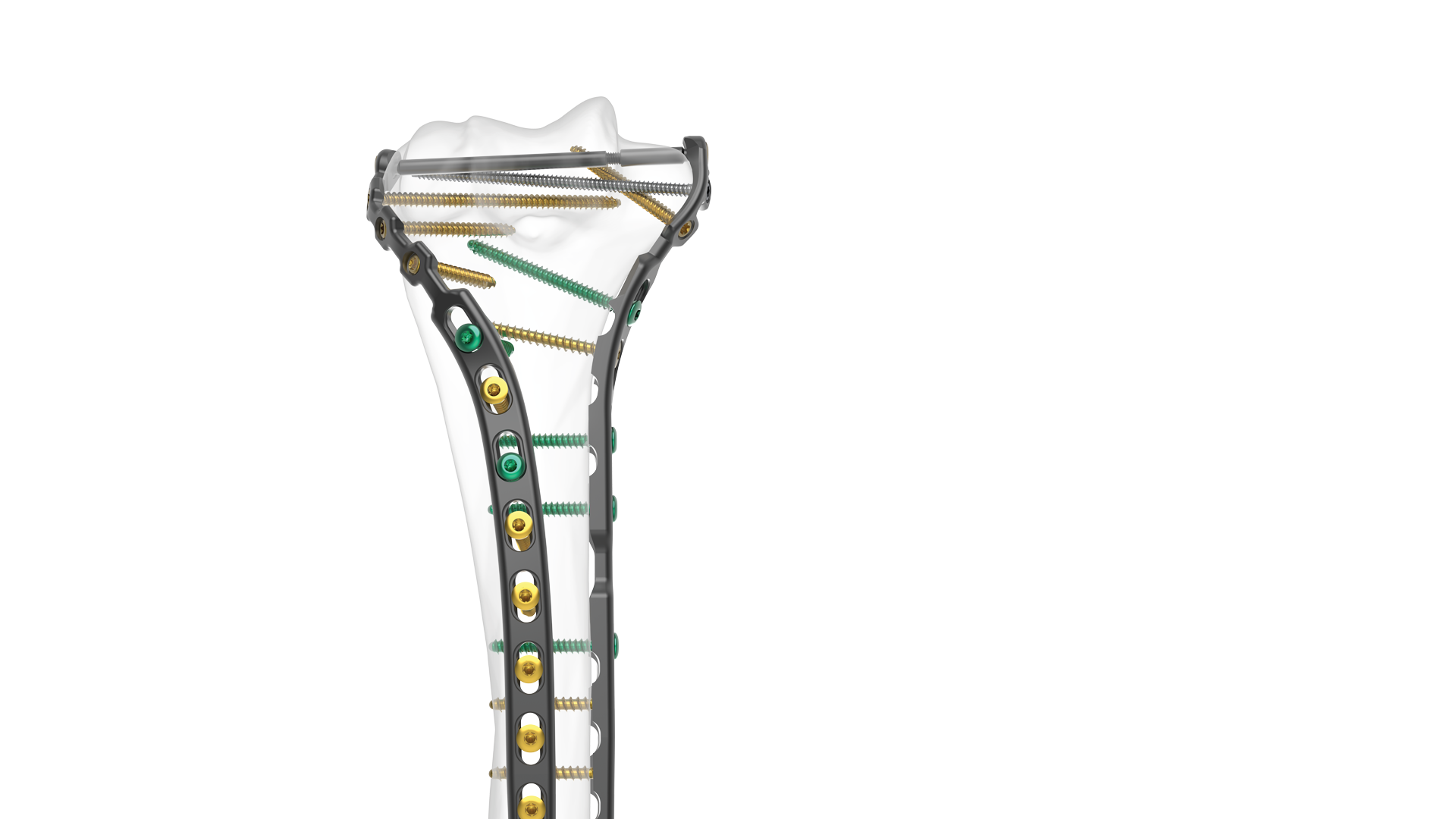
Humeral Fixation Set
Features
- TiBeam® technology connects medial and lateral columns
- The next generation of distal and midshaft humeral fracture fixation
- FREEFIX® technology allows complete freedom of screw placement
FREEFIX Humeral Fixation Systems
The Humeral Fixation Set is designed for the fixation of fractures, peri-prosthetic fractures, non-unions and malunions. It can have applications in most adult patients, including those with osteopenic bones. The set’s systems are available in many configurations to account for variations in patient anatomy, and to treat a variety of injuries.
To aid in the repair of both midshaft and distal humerus fractures, the set contains separate systems each with their own components. Both are supplied non-sterile for sterilisation at a user facility.
Distal Humerus Plating System instrumentation
- Medial direct plates (75, 105, 135, and 165mm)
- Lateral direct plates (85 and 115mm)
- Lateral helical plates (85, 115, 145, and 175mm)
- Capitellar plates (70, 100, 130, and 160mm)
- Supracondylar plates (142, 196, and 250mm)
- Titanium and cobalt chrome cannulated polyaxial locking screws
- Stainless steel K-wires
- Specialised fracture fixation instrumentation
Midshaft Humerus Plating System instrumentation
- Broad plates (136, 172, 208, and 244mm)
- Narrow plates (136, 172, 208, and 244mm)
- Titanium alloy plates and screws
- Stainless steel K-wires
- Specialised fracture fixation instrumentation
INTERESTED FREEFIX® HUMERAL PLATING SET?
If you would like more information regarding Skeletal Dynamics’ FREEFIX® Humeral Plating Set.
Interested in the Humeral Fixation Set?
Performance testing
The Skeletal Dynamics FREEFIX Humeral Plating Set has undergone mechanical performance testing and engineering analysis. This, combined with static testing, demonstrates the set is equivalent to predicate devices currently marketed. The systems were resultantly tested according to ASTM-F543-17 Standard Specification and Test Methods for Metallic Medical Bone Screws.
Nevertheless, surgeons should perform functional checks prior to use. This confirms that mating devices have proper assembly, reusable devices can be operated effectively, and rotating instruments are straight. The latter can be checked by rolling the instrument in question on a flat surface.
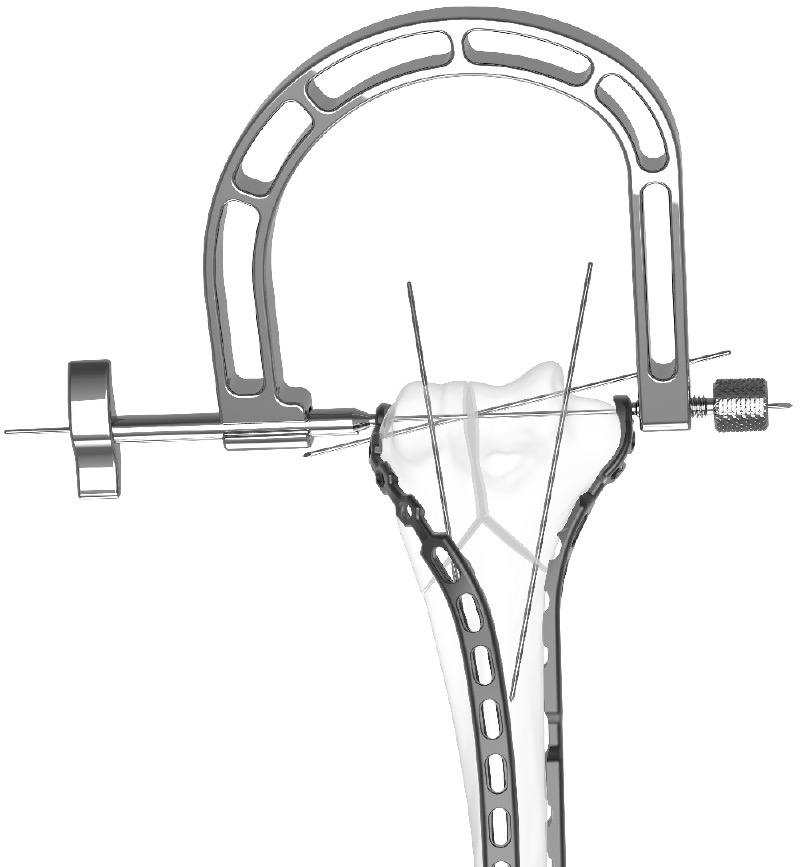
Use trajectory guide to place k-wire through the most distal holes of the medial and lateral plate.
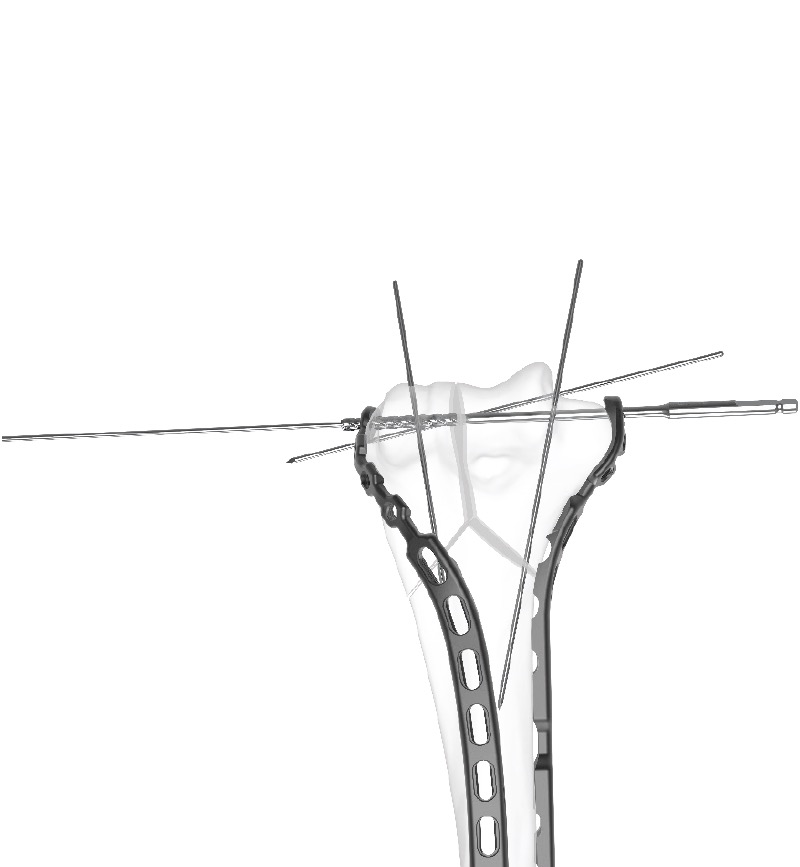
Drill through both plates with the 3.7mm cannulated drill.
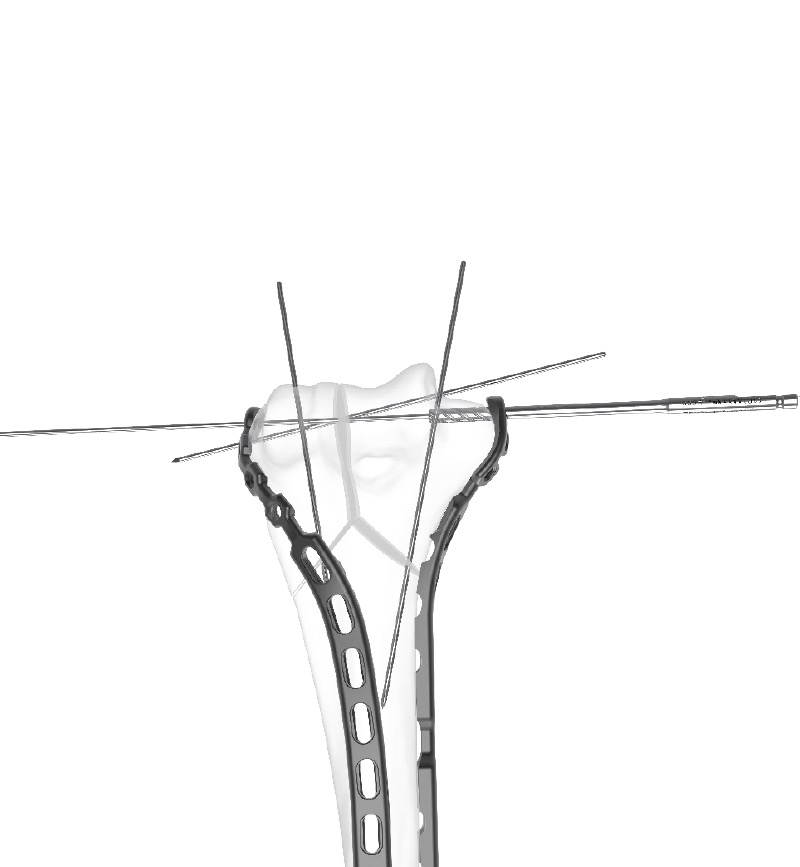
Overdrill with the 4.0mm stop drill.
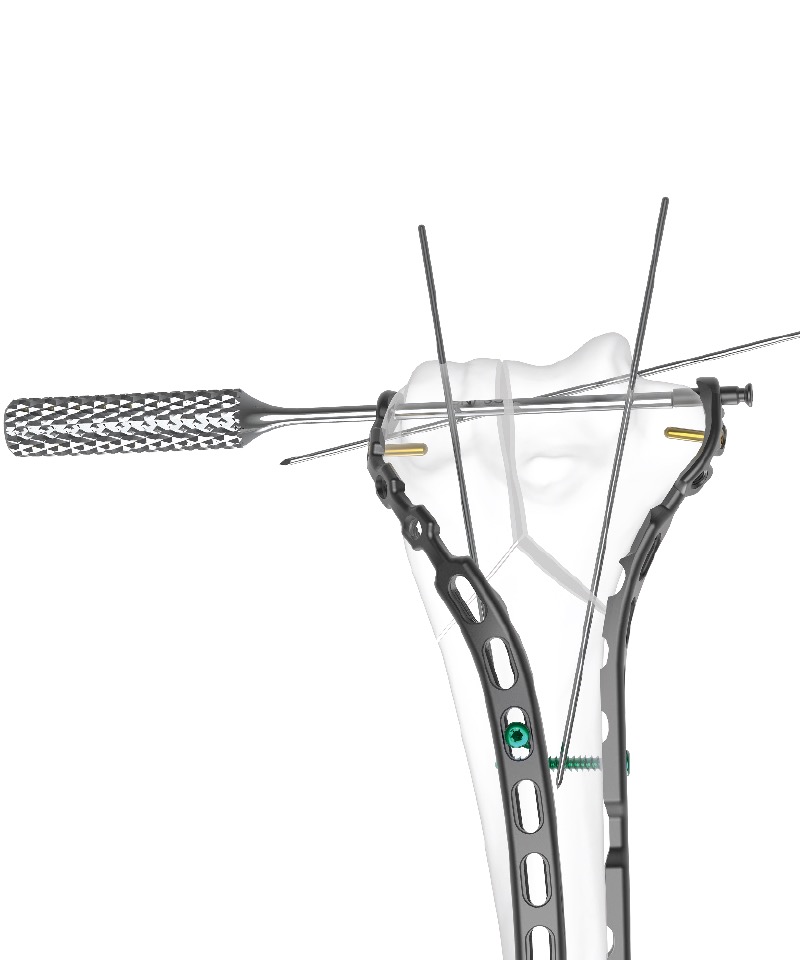
Use the insertion tool and T-10 driver (not pictured) to insert the female component through the plate.
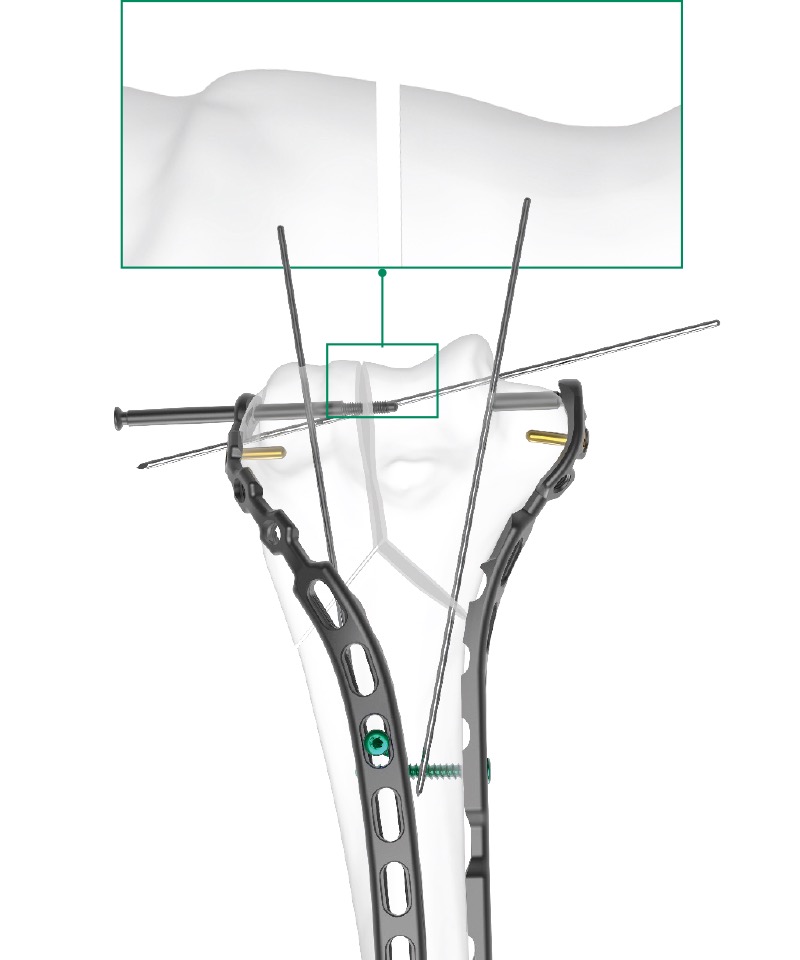
Introduce male component using T-10 driver (not pictured).
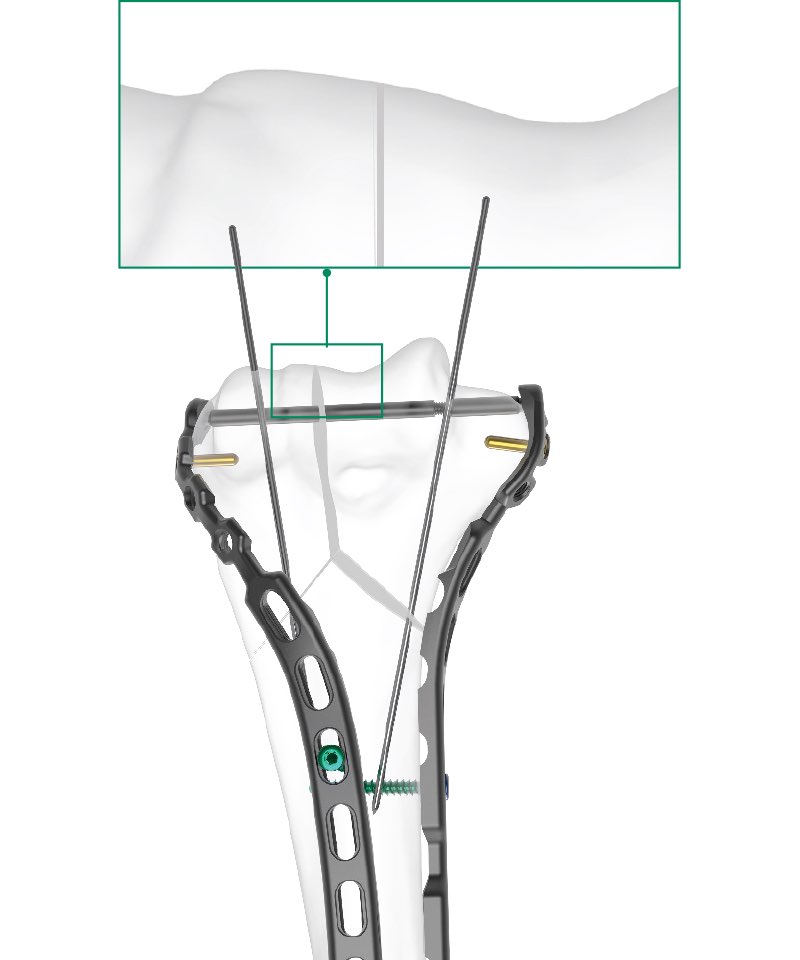
Thread the male component into the female and continue advancing until the desired compression is achieved.
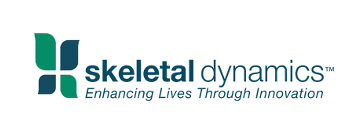
Founded in 2007 by Dr Jorge Orbay, MD, Skeletal Dynamics set out to provide innovative, science-based solutions to solve and understand the clinical challenges of upper extremity surgery and unmet clinical needs. Skeletal Dynamics is the only medical device company that is 100% solely focused on the upper extremities. Distributors of Skeletal Dynamics are selected based on individual integrity, industry experience and clinical knowledge and LEDA is proud to be the leading distributor in the UK for Skeletal Dynamic products including:
Frequently Asked Questions
To recover from humerus fixation surgery without complication, it’s recommended that patients limit their upper arm motion for a number of weeks. External rotation beyond 45 degrees should be avoided for four weeks. Active range of motion avoided to six weeks, and resisted range of motion avoided for eight weeks. A cast is typically used to aid in humerus surgery recovery.
Humeral fractures typically occur due to extreme force exerted on the upper arm. For example, a direct impact sustained during a motorcycle accident. Another possible cause can simply be a fall on an outstretched arm.
